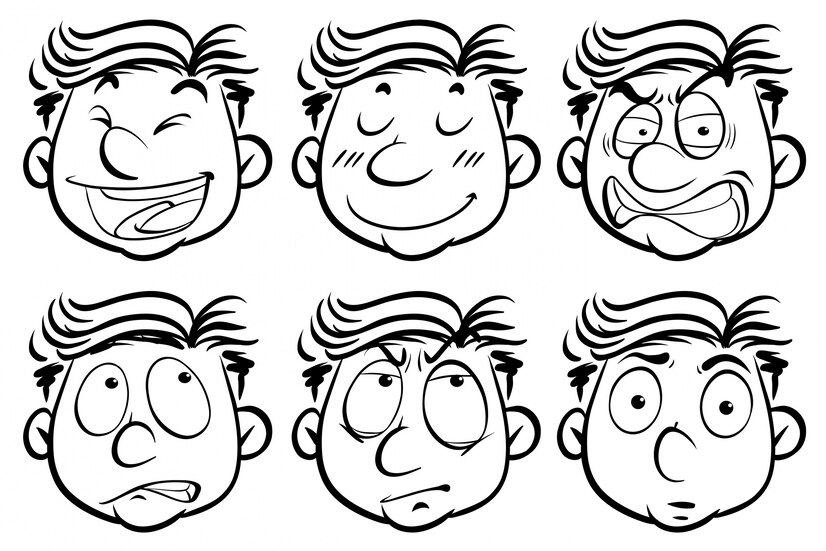Drawing a cartoon nose may seem like a simple task, but mastering the nuances can significantly enhance the personality of your characters. In this guide, we’ll break down the process into manageable steps, offering practical tips and insights.
Whether you’re a beginner or an experienced artist, our aim is to provide a clear and comprehensive approach to help you create captivating cartoon noses. Let’s dive into the details and discover how to breathe life into your character’s expressions through the art of drawing noses.
Understanding the Anatomy of a Cartoon Nose
- The Bridge: Foundation of the Nose. Begin by understanding the bridge—the backbone of the nose. Its length, width, and curvature vary, defining the character’s personality. Experiment with different bridge styles to bring diversity to your drawings;
- Nostrils: The Breathing Essence. Nostrils, small but crucial, breathe life into your cartoon. Explore various shapes and placements to convey emotions or characteristics. Remember, asymmetry adds intrigue and uniqueness;
- Shape Matters: Shapes tell stories. Delve into the art of crafting diverse nose shapes, from button-like cuteness to bold, angular designs. Tailor your choice to the character’s personality, creating a visual language that speaks volumes.
Step-by-Step Guide: How to Draw a Cartoon Nose
- Sketching the Basic Shape: Begin with a gentle sketch, mapping the nose’s placement on the face. Consider the character’s age, gender, and style, adjusting the basic shape accordingly;
- Defining the Nostrils with Elegance: Nostrils aren’t just holes; they’re expressive features. Use flowing lines to define them, considering the character’s mood. Experiment with sizes and shapes, letting your cartoon breathe with individuality;
- Adding Subtle Details for Realism: In this segment, we explore advanced techniques. Shading becomes paramount—create gradients to mimic shadows and highlights. Texture play adds depth; whether it’s a smooth button nose or a textured, aged snout, details matter.
Explore how to draw nose for different characters in this tutorial
Tips for Beginners: Choosing the Right Tools
Beginners, start with soft pencils for initial sketches. Gradually switch to harder ones for cleaner lines. Sketch lightly to allow room for adjustments.
Best Inking Pens: Outlining with Precision
Fine-tipped inking pens provide clean outlines. Experiment with various thicknesses to add dynamic visual appeal. Practice controlled strokes for polished results.
Colors and Techniques: A Palette of Possibilities
For color, the choice between watercolors and colored pencils depends on your style. Watercolors offer vibrancy, while colored pencils provide control. Blend colors seamlessly for a harmonious finish.
Watercolors vs. Colored Pencils: Pros and Cons
Watercolors offer a spectrum of hues but require skill control. Colored pencils provide precision but demand patience. Choose based on your comfort and artistic vision.
Blending Magic: Fusing Colors Seamlessly
Master the art of blending. Whether using watercolors or pencils, blending creates gradients and smooth transitions. This technique elevates your cartoon nose from mundane to masterful.
Common Mistakes to Avoid: Overcomplicating
Resist the temptation to overcomplicate. Simple yet well-executed noses often convey more character. Focus on essential details that define your character’s uniqueness.
Neglecting Shading: The Key to Dimension
Shading transforms a flat drawing into a three-dimensional masterpiece. Experiment with light sources and shadows to add depth and realism.
Symmetry Trap: Embracing Asymmetry for Character
Nature isn’t perfectly symmetrical, and neither should your cartoon noses be. Embrace subtle asymmetry for a more organic and captivating look.
Conclusion
In the realm of cartoon drawing, mastering the art of depicting noses adds a subtle yet powerful layer to your characters. By following the step-by-step guide and incorporating shading techniques, you’ve learned to infuse depth and personality into your creations.
Remember, simplicity often speaks volumes, and by avoiding common pitfalls, you can craft cartoon noses that are both expressive and unique. Armed with these insights, let your creativity flow, and may your cartoon characters now exhibit a new dimension of emotion and charm.
